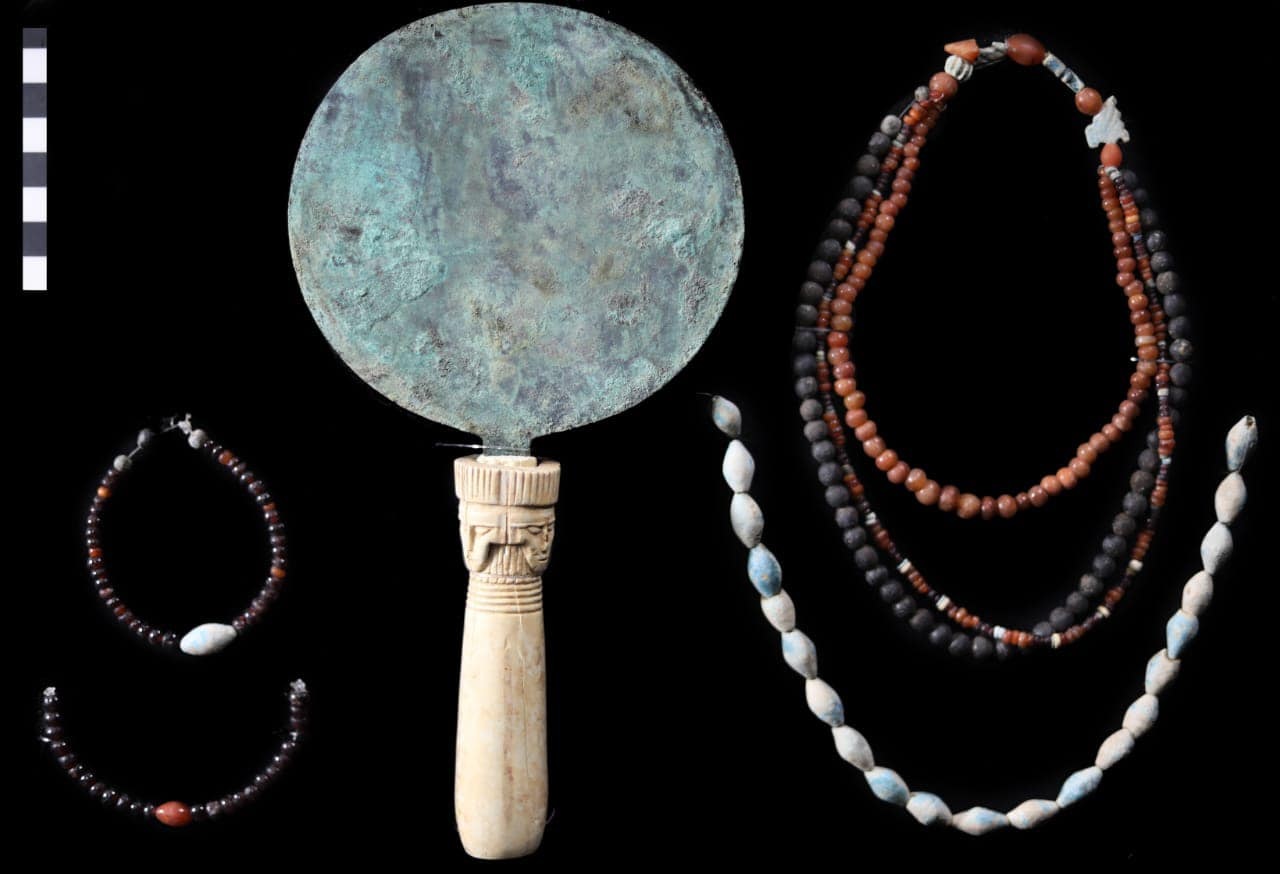According to a recent press statement issued by Egypt’s Ministry of Tourism and Antiquities, archaeologists have unearthed a tomb in the South Asasif necropolis on the West Bank of Luxor, Egypt.
The tomb is located adjacent to the Temple of Hatshepsut and dates from the Middle Kingdom (1938-1630 BC), which Dr. Elena Pischikova from the South Asasif Conservation Project explained is the first example from this period found within the necropolis.
Within the tomb interior are the remains of coffins containing the burials of men, women, and children, indicating that the site served multiple generations of the same family lineage during the 12th and early 13th Dynasty.
The burials have been heavily damaged due to flooding, which has destroyed most of the coffins made from wood and the wrapped linen fabrics used in the mummification process.
Excavations have revealed numerous high-status objects, such as necklaces strung with semi-precious gems, bracelets, rings, blue-green glazed porcelain, and a painted stone adorned with intricate designs of hippos, falcons, and snake motifs.

Mr. Mohamed Abdel-Badii, Head of the Central Department of Upper Egypt Artefacts also noted the discovery of a rare green-blue glazed faience figurine, two copper mirrors – one with a lotus-shaped handle, and the other with a depiction of Hathor (a sky deity in Ancient Egyptian religion), and a unique necklace composed of cylindrical amethyst beads, with agate cylinder beads surrounding a carved hippopotamus head.
According to the South Asasif Conservation Project: “This significant discovery contributes to our understanding of the burial practices and rituals of the Theban necropolis in the Middle Kingdom as well as presenting a beautiful collection of exquisitely crafted jewelry well preserved in situ.”
“Further exploration of the Middle Kingdom burials in the South Asasif necropolis will significantly advance our ongoing research on Middle Kingdom influences on the art and funerary rituals of the Twenty-fifth Dynasty.”
Header Image Credit : South Asasif Conservation Project
Sources : Ministry of Tourism and Antiquities





